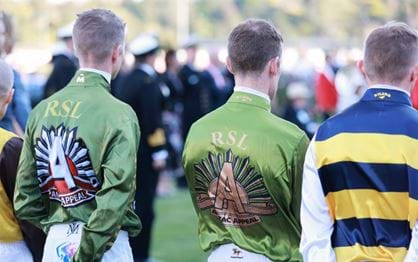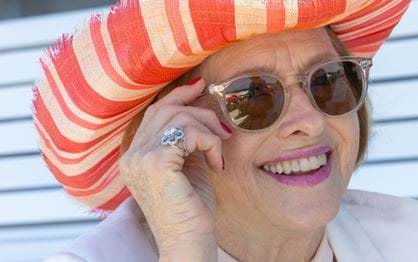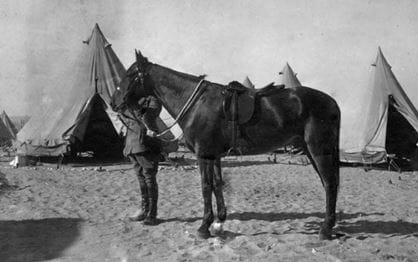Only a few Australian jockeys fought at Gallipoli but dozens later enlisted in the AIF (Australian Imperial Force) after height restrictions were reduced in July 1915. Fearless steeplechase jockeys were prominent. Several not only served overseas but also returned successfully to race riding after the war. Young trainers also enlisted, including Trooper E.S.A. Bell who served with the Australian Veterinary Corps in France. After the war Bell became the VRC's chief stipendiary steward.
Not all the jockeys and trainers who signed up became war heroes: a few were out-and-out rogues. But maybe there is scope for racing to do a better job of remembering their individual stories. Who today knows of Private John Henry Megan? The Flemington horse trainer joined the 9th Australian Light Horse Regiment in late 1914 and was killed at Gallipoli in August 1915: he died of his wounds while being evacuated on a hospital ship and was buried at sea, east of Lemnos Island.
Although World War l endured for the span of five Melbourne Cup wins – from Kingsburgh in 1914 through to Night Watch in 1918 – only one was run during the disastrous Gallipoli campaign.
Patrobas (ridden by Bobbie Lewis, trained by Charles Wheeler) is famous in Melbourne Cup history as the first winner ever to have been officially owned by a woman (Edith Widdis). But he was especially remembered by the diggers as the horse who won the Cup in the year of Gallipoli.
The officers of the First Light Horse organised a sweep on the Melbourne Cup and within a week of the race, the results were published in the trench gazette.
The Cup trophy won by Widdis in 1915 differs markedly from the famous trophy design that we know today, but it was one of the first to have been made entirely in Australia. It was a huge silver rose bowl. Melbourne goldsmith James Steeth created the first three-handled gold Loving Cup trophy just after the war, in 1919, and all Melbourne Cup trophies since that time have been based on his design.
In Australia, as the war dragged on, some voices called loudly for organised sport to be suspended. The intensely patriotic committee of the Victoria Racing Club put a more balanced position to the government. Around the nation racing was reduced but traditional events continued at Flemington, with all proceeds devoted to welfare of the troops and returned servicemen. To most troops overseas, it was a morale booster to know that the races continued.




